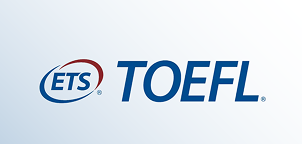Virtual Cloud Computing
Enrol now for this free Virtual Cloud Computing course and enhance your knowledge in this in-demand domain. Learn about Virtualizations, important virtualization terminologies and more from our experts. Start today!

Ratings
Level
Learning hours

Learners
Skills you will learn
About this course
In this course, we'll cover the need for cloud computing, introduce you to its fundamentals, explain how it works, and focus on the vital role of virtualization. Cloud computing is essential for businesses seeking flexible and scalable IT resources which can be accessed over the Internet. We'll explore cloud models and services, including public, private, and hybrid clouds. You'll gain a solid understanding of cloud computing concepts, followed by an in-depth look at virtualization, a key technology behind cloud infrastructure. We'll explain important virtualization terms such as a hypervisor, virtual machines (VMs), and containers.
The course will highlight the characteristics and benefits of virtualization. You'll learn how it optimizes resource utilization, enhances flexibility, and enables efficient IT infrastructure management. We'll discuss cost savings, disaster recovery, and business continuity. By the end, you'll have a strong foundation in virtual cloud computing, comprehending its significance in the digital landscape and its potential business advantages.
Course Outline
This module focuses on several reasons that define the need for cloud computing. You will learn why organizations of all types require the implementation of cloud computing. Finally, you will go through a simple real-life scenario for cloud computing applications on IoT devices.
This module starts with helping you understand what Cloud Computing is and go through various cloud models like public, private, and hybrid clouds.
In this module, you will understand the two main divisions of cloud computing, frontend and backend, that contributes to the working model of cloud computation. The tutor will brief you about the frontend and backend in detail to help you understand how these work together as a single unit with the help of middleware. Next, the tutor will talk about middleware and its importance in cloud computing. Later, you will be familiarized with the redundancy of data in cloud computation. Lastly, you will learn the reasons behind data redundancy in cloud computing.
This section discusses what virtualization in cloud computing is and goes on to explain the entity concept and its working.
This section defines and explains the important terminologies in cloud computing.
 UPGRADE
UPGRADE
Recommended university programs
What our learners enjoyed the most
Skill & tools
61% of learners found all the desired skills & tools
Frequently Asked Questions
Will I receive a certificate upon completing this free course?
Is this course free?
What are the prerequisites to learning this Virtual Cloud Computing course?
This is a beginner-level course. You do not need to have any prior knowledge to learn this course since it takes you through all the basics you need to know.
How long does it take to complete this free Virtual Cloud Computing course?
Although this Virtual Cloud Computing is an hour-long course, you can learn it at your leisure since it is self-paced.
Will I have lifetime access to this free Virtual Cloud Computing online course?
Yes. Once you enroll in this free Virtual Cloud Computing online course, you will have lifetime access to it.
Virtual Cloud Computing
Virtual cloud computing, often referred to simply as "cloud computing," has revolutionized the way businesses and individuals access, store, and manage data and applications. It represents a seismic shift from traditional on-premises IT infrastructure to a dynamic, scalable, and cost-effective model that has become the cornerstone of the modern digital ecosystem.
The Foundation of Cloud Computing
Cloud computing is built on a foundation of virtualization technology. Virtualization allows for the creation of virtual machines (VMs) that can run multiple operating systems and applications on a single physical server. This breakthrough innovation laid the groundwork for the cloud as we know it today.
Key Characteristics of Virtual Cloud Computing:
- Scalability: One of the defining features of virtual cloud computing is its scalability. Organizations can easily scale their computing resources up or down based on demand. This elasticity is particularly valuable for businesses with fluctuating workloads or seasonal peaks.
- Cost Efficiency: Cloud computing eliminates the need for significant upfront hardware investments and reduces ongoing operational costs. Users pay only for the resources they consume, making it a cost-effective solution for businesses of all sizes.
- Accessibility: Cloud services are accessible from anywhere with an internet connection. This flexibility enables remote work, enhances collaboration, and supports global operations.
- Reliability and Redundancy: Leading cloud providers offer robust redundancy and disaster recovery capabilities. Data is replicated across multiple data centers, reducing the risk of data loss due to hardware failures or natural disasters.
- Security: Cloud providers invest heavily in security measures to protect data and resources. However, security is a shared responsibility, and users must implement best practices to safeguard their assets.
Types of Cloud Computing Services:
- Infrastructure as a Service (IaaS): IaaS provides virtualized computing resources over the internet. Users can provision and manage virtual machines, storage, and networking, allowing for greater control and customization.
- Platform as a Service (PaaS): PaaS offers a platform for developing, testing, and deploying applications. It abstracts infrastructure management, enabling developers to focus on coding and innovation.
- Software as a Service (SaaS): SaaS delivers software applications via the cloud. Users access applications through a web browser, eliminating the need for local installations and updates.
- Benefits and Challenges of Virtual Cloud Computing:
Benefits:
- Cost Savings: Cloud computing reduces capital expenditures, lowers operational costs, and offers pay-as-you-go pricing models.
- Flexibility: Organizations can quickly adapt to changing business needs, scaling resources up or down as required.
- Global Reach: Cloud providers offer data centers in multiple regions, enabling global accessibility and redundancy.
- Innovation: Cloud platforms provide access to a wide range of cutting-edge technologies, such as machine learning, artificial intelligence, and big data analytics.
Challenges:
- Security and Compliance: Concerns about data security and regulatory compliance remain prominent in the cloud. It's crucial for users to implement robust security measures and understand their compliance obligations.
- Data Privacy: Storing sensitive data in the cloud requires careful consideration of data privacy and sovereignty laws in different regions.
- Vendor Lock-In: Migrating from one cloud provider to another can be challenging and costly, leading to vendor lock-in.
The Future of Virtual Cloud Computing:
The future of virtual cloud computing is poised for continued growth and innovation. Emerging technologies like edge computing, serverless computing, and containerization are extending the capabilities of cloud platforms. Additionally, the integration of artificial intelligence and machine learning into cloud services is driving new possibilities in data analysis, automation, and predictive capabilities.
In conclusion, virtual cloud computing has fundamentally transformed the IT landscape, offering businesses unparalleled flexibility, scalability, and cost efficiency. As the digital world continues to evolve, the cloud will remain a central force in shaping the way we work, connect, and innovate. Organizations that harness the power of virtual cloud computing are better positioned to thrive in an increasingly competitive and dynamic environment.


























.jpg)






.jpg)










